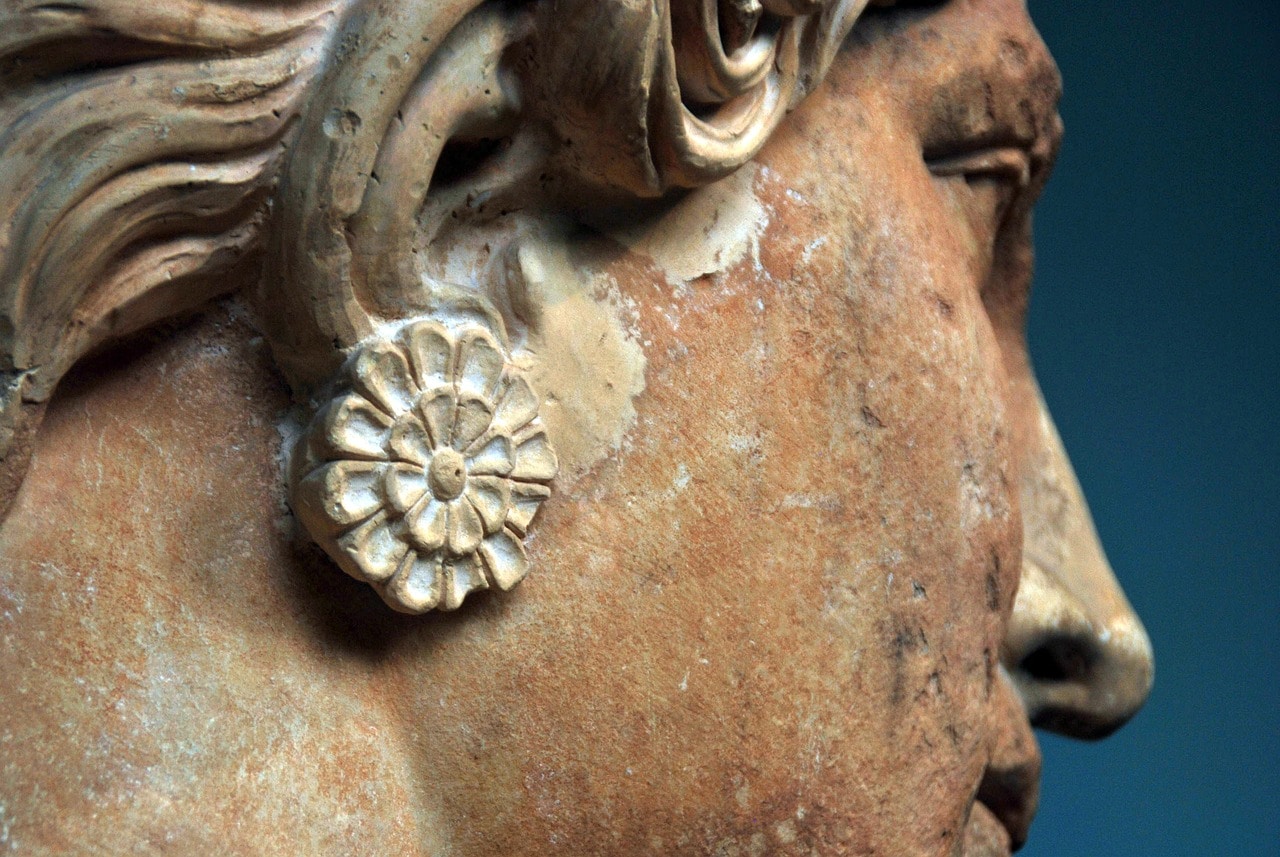
Table of Contents
Ancient Greek jewelry was distinct and beautiful, with designs that are still relevant today. You’ll find many modern reproductions of Greek jewelry designs and motifs available, that make for stylish and fashionable accessories fit for the 21st century.
If you’re looking to purchase Greek jewelry or are just interested in its history, keep reading! Here’s our guide to ancient Greek jewelry.
History of Greek Jewelry
With jewelry that dates back to over 3500 years ago, Greece has a rich and long tradition in jewelry making.
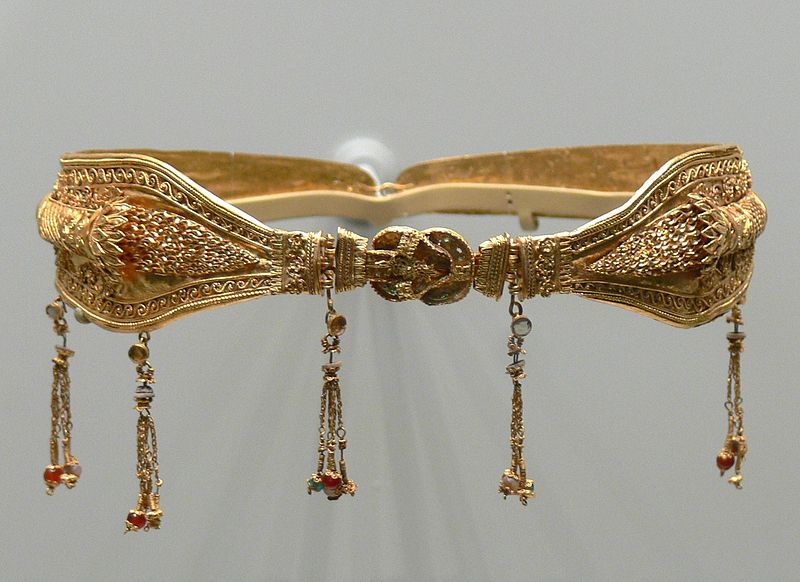
Just like the Egyptians and the Romans, the ancient Greeks too valued jewelry but compared to the jewelry of civilizations like Egypt, which was astonishingly elaborate and rich, initially, Greek jewelry was quite understated, simple, and inspired by nature. Over time, the designs grew to be more complex and included the use of different materials.
The history of jewelry in Greece can be divided into 3 main stages.
1. The Bronze Age
Prior to the Bronze age, the Greeks created jewelry out of clay, bone, shell, and stone but the arrival of metals meant that they could take their jewelry-making skills to the next level. The Bronze age comprises two main eras: Minoan and Mycenaean.
The jewelry produced in this period is characterized by its use of gold with special techniques such as casting and making wire commonly used.
The jewelry designs were more complicated and elaborate at this time. It included pieces like armbands, necklaces, and brooches. Jewelry started representing the status, power, and wealth of the wearer.
At the end of the Mycenaean era, the civilization suddenly collapsed and Greece entered a period of Dark Ages around 1100 B.C. Jewelry making was minimal at this time and nothing much came out of Greece for about 300 years. This ended with the Classical period.
2. Classical Greece Jewelry
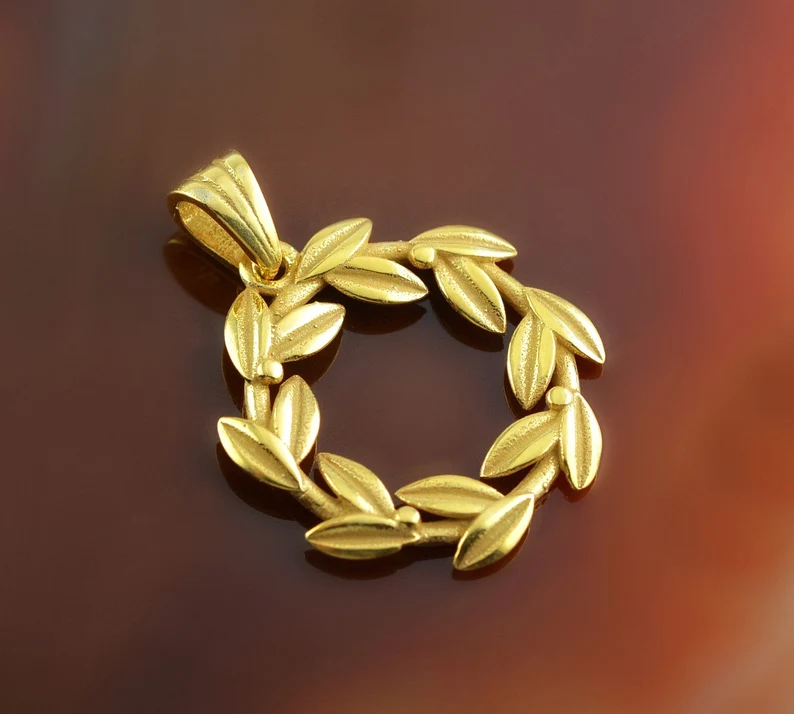
The next period of importance is the Classical Greece era which was around 500 B.C. This is known as the Golden Age of Greek civilization. During this era, precious metals like gold and gemstones were used.
The jewelry of this period is characterized by the use of filigree work and thin sheets of gold, which were expertly used to create delicate and embellished jewelry.
Gold olive wreaths from this period are an excellent example of how fine and delicate the jewelry-making was. The olive wreath was the prize for champions in competitions and prior to this was made of actual olive leaves. For the first time, a winner could be crowned with a wreath of gold.
3. Hellenistic Period
The Hellenistic period (323-31) was a short but abundant period where the wealth of Greece can be seen. Gold and gemstones were used, and eastern influences can be seen in the designs and jewelry of this era.
Amethysts, pearls, turquoise, and emeralds were commonly used. Cameos were carved using sardonyx.
Alexander the Great and Greek Jewelry
The jewelry designs of Greece were heavily influenced by other parts of the world, initially, Europe and later Asia, after Alexander the Great invaded and conquered parts of Asia. This brought a great inflow of ideas and influences which infiltrated Greek designs and art.
Later on, when the Romans conquered Greece, the influence of Roman culture can be seen in Greek jewelry.
Why Did the Greeks Wear Jewelry?
As the Greek philosophers said, “Moderation in all things”. The Greeks, one might argue, were minimalists and this is reflected in how they wore jewelry.
Jewelry in ancient Greece was not worn frequently. It wasn’t a major part of daily life and was usually only worn on special occasions. Generally, it was the women of the wealthy classes who wore jewelry.
Jewelry in general was worn as an index of social class and status, and to symbolize power and wealth.
Greeks believed that jewelry could protect them and ward off evil and many wore jewelry as a measure of protection. Another reason for wearing jewelry was due to religion. The ancient Greeks had many gods and jewelry was sometimes dedicated to these gods.
Jewelry was also sometimes used for funerary purposes, with jewelry placed in tombs in the belief that it would travel to the afterlife with the owner of the jewelry.
Types of Ancient Greek Jewelry
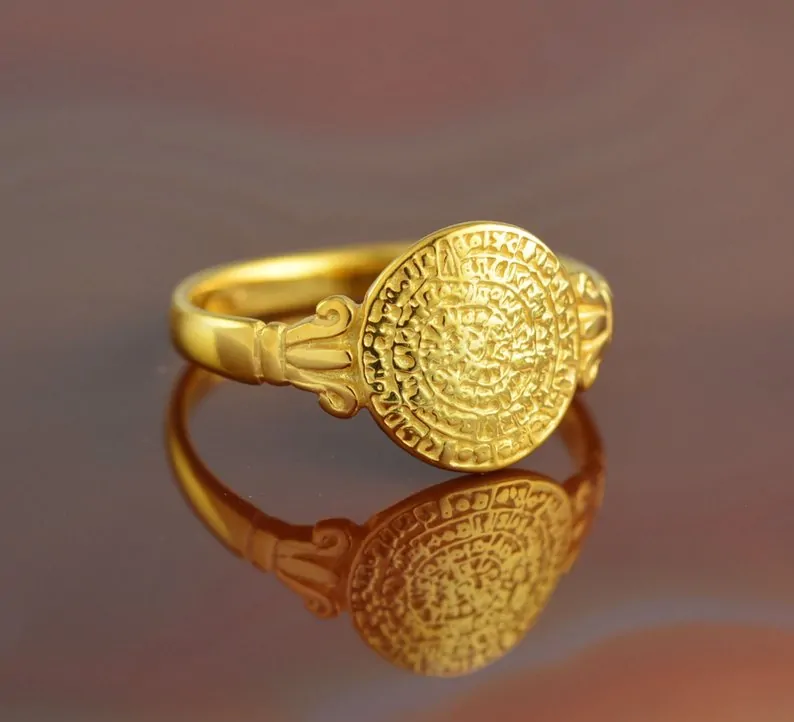
Greek jewelry includes rings, pendants, brooches, diadems, wreaths, armbands, thigh bands, bracelets, earrings, and hair accessories, to name a few.
These jewelry types were made using gold, silver, metal, and gemstones. Gemstones were brought into Greece from different parts of the world.
Gemstone inlays were commonly used in jewelry designs, while casting and hammering were two popular jewelry-making techniques of the time. Cameos and intaglios were also popular and featured images of gods, people, and objects from the natural world.
Ancient Greek Jewelry Today
Whether you’re looking for genuine antique Greek jewelry or for beautifully crafted modern replicas, there are many options available to you. Most will be crafted out of gold or gold-plated metals and sometimes feature gemstones.
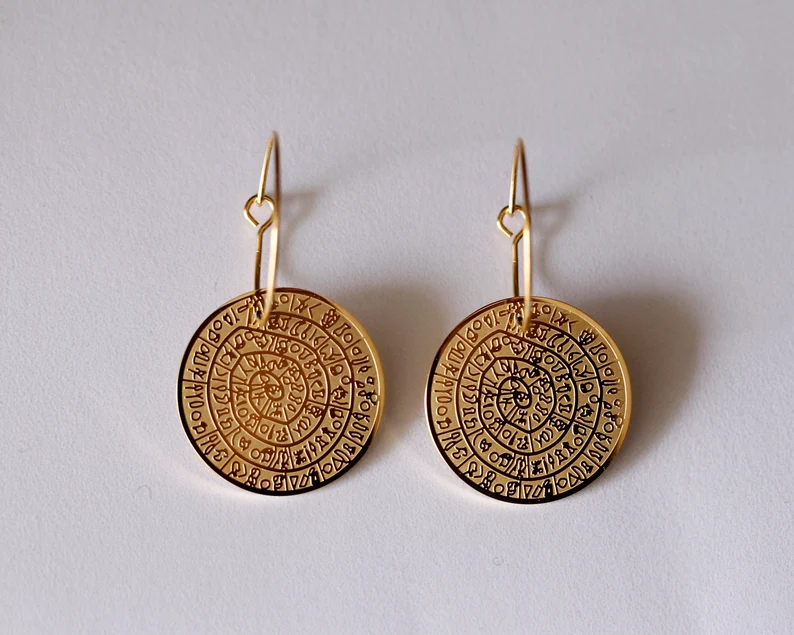
Many jewelry designers create reproductions of famous Greek jewelry styles, allowing you to incorporate a little bit of history into your look.
These ancient Greece-inspired jewelry feature motifs from the natural world like animals, leaves, vines, and flowers.
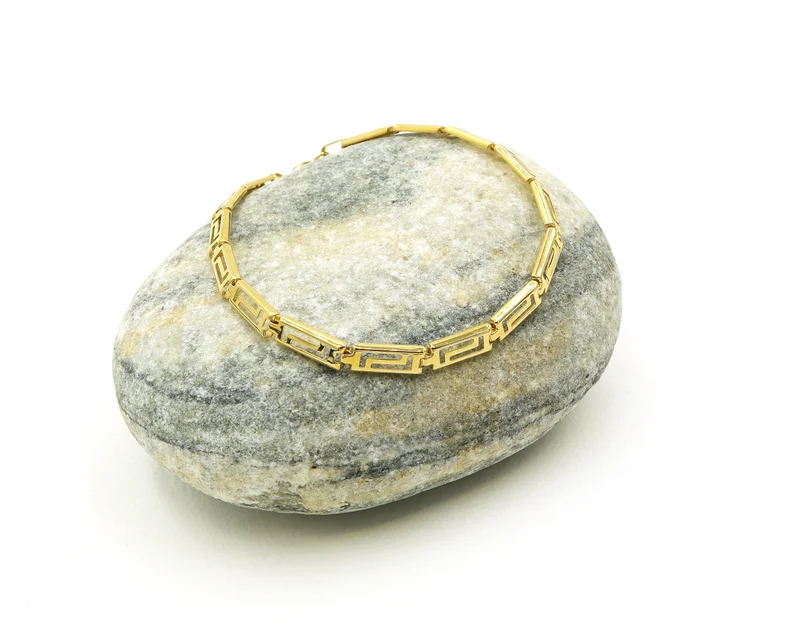
Other popular Greek symbols like Greek letters, the caduceus, or the famous meander pattern are also often featured on Greek jewelry.
Where to Buy Greek Jewelry
If you’re looking to buy Greek jewelry, we recommend checking out Etsy. Etsy has a range of impressive Greek jewelry, from modern reproductions to some ancient and highly valuable pieces.
Many of the pieces are beautiful, artisan, hand-crafted designs. There’s something for everyone’s budget and taste.










